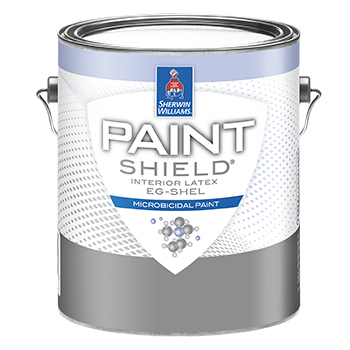Improving your specifications by better understanding paint composition.
For architects and designers, providing better paint specifications for the job starts with a deeper understanding of paint technology. According to Rick Watson, Sherwin-Williams director of product information and technical services, perceptions about 100 percent acrylic paints are not always accurate and are just an opinion.

Rick Watson, Sherwin-Williams director of product information and technical services
Watson says many design pros and specifiers have been taught that a 100 percent acrylic coating is preferable regardless of the application. This approach does not consider the most appropriate use for polymer performance nor the correct application. “For the right application, a 100 percent acrylic can be an outstanding solution. But that type of product isn’t the best for every project. Does the surface require stain resistance, for instance? A 100 percent acrylic coating isn’t going to give you that feature,” he says.
Architects and design pros who are evaluating paints entirely through the “100 percent acrylic lens” may miss opportunities to specify coatings that can provide a much wider and more powerful array of performance capabilities. As examples, for stain resistance/washability (ASTM D4824), styrene acrylic and acrylic-alkyds are most appropriate and offer the best results; 100 percent acrylic is in the middle of the pack and may not perform as well. For erosion resistance/scrubs (ASTM D2486), vinyl acrylic and 100 percent acrylic are most appropriate to achieve a higher value.
Today’s more diverse formulations give architects and design pros the opportunity to choose from a broader array of coatings that work harder. That includes paints that not only offer stain resistance but also paints that offer moisture control, improve air quality, have better durability, can kill microbes and have a host of other features.
“At Sherwin-Williams, we’ve developed new formulations that allow us to provide a truly washable flat,” Watson says. “Not only that, it’s a washable flat that’s also burnish-resistant, provides moisture protection and the color won’t rub off. That’s a high-performance innovation that really benefits our customers.”
The Future State of Paint
Watson sees coatings continuing to play a more active role in providing ambient features and benefits in the built environment as they become increasingly “smart.” Adding increased durability, air quality, odor reduction, mold and mildew resistance, and microbicidal properties to next-gen and brand-new products are all on the list.

Watson says new technologies are already allowing design pros to do more with the paints they specify. One example is Sherwin-Williams Paint Shield® Microbicidal Interior Latex Paint. “Technology comes to life here,” Watson says. “It’s the first EPA-registered paint that kills 99.9 percent of methicillin-resistant Staphylococcus aureus (MRSA), Enterobacter aerogenes, Staphylococcus aureus (staph), vancomycin-resistant Enterococci (VRE) and Escherichia coli (E. coli) within two hours of exposure on the painted surface and continues to kill 90 percent of the bacteria even after repeated contamination. For architects, it’s a great product to consider for interior spaces like healthcare facilities, hotels, restrooms and gyms. It’s truly innovative.”

Sherwin-Williams Harmony® Interior Acrylic Latex is another innovative paint that is providing ambient benefits in the built environment, as it helps reduce odors and formaldehyde.* “When Sherwin-Williams began working on this product, few imagined it was possible to create a paint that was able to neutralize a formaldehyde VOC when it comes into contact with a paint film,” Watson says.
These futuristic technologies are on the market now, and Watson envisions more like them in the future. “Some of the ideas we are working on in the lab right now are so ‘pie in the sky,’ you would never believe it,” he says. “But we’re continually looking at formulations and raw materials to make these big ideas happen. We aren’t sitting still. We’re always trying to improve.”
*The length of time Harmony actively reduces odors and formaldehyde depends on the concentration, the frequency of exposure and the amount of painted surface area.








